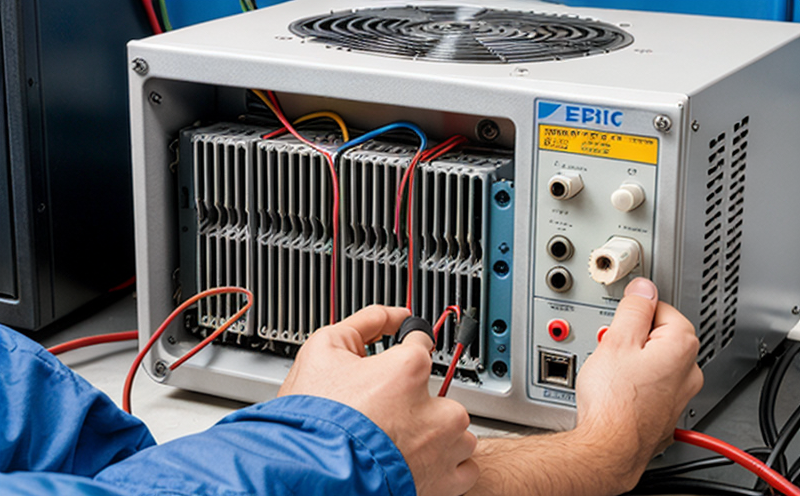IEC 60092-360 Electrical Cable Thermal Testing
The IEC (International Electrotechnical Commission) Standard 60092-360 specifies the methods for testing electrical cables under thermal stress. This standard is critical in ensuring that electrical cables can withstand environmental and operational conditions without failure, thereby enhancing safety and reliability.
Thermal testing of electrical cables involves subjecting them to controlled heating conditions to evaluate their performance over time. The primary goal is to assess the cable’s ability to maintain its structural integrity and electrical conductivity under elevated temperatures. This process helps identify potential weaknesses or vulnerabilities before they lead to catastrophic failures in real-world applications.
The standard outlines various test procedures aimed at simulating different types of thermal stress that cables might encounter during installation, operation, maintenance, and decommissioning. These tests are essential for ensuring compliance with safety regulations and for validating the performance characteristics of electrical cables across diverse industries such as shipping, offshore drilling, renewable energy installations, and more.
For marine and ship equipment testing in particular, IEC 60092-360 provides a robust framework for assessing cable integrity under extreme conditions. The tests can help determine whether the cables will perform reliably even when exposed to high temperatures, humidity, salt spray, or other harsh environmental factors typical of maritime environments.
The testing process typically involves subjecting samples of electrical cables to controlled heating cycles followed by cooling periods. During these phases, technicians monitor various parameters including resistance changes, insulation degradation, and overall structural integrity. Compliance with the specified limits ensures that the tested cables meet stringent safety requirements set forth in international standards.
It’s important to note that accurate measurement of temperature profiles throughout the testing process is crucial for reliable results. Advanced instrumentation like thermocouples or infrared sensors can provide precise data on how quickly the cable heats up and cools down, as well as its thermal distribution along its length.
The outcomes from this testing procedure play a vital role in selecting appropriate cables for critical applications where reliability is paramount. By adhering to these rigorous tests, manufacturers ensure that their products are not only compliant with regulatory requirements but also capable of performing optimally under challenging circumstances.
Benefits
- Ensures compliance with international standards for electrical cable performance.
- Identifies potential weaknesses in cables before they become operational issues.
- Enhances the safety and reliability of electrical systems used in harsh environments.
- Supports informed decision-making during procurement processes by providing objective test results.
The benefits extend beyond mere compliance; they also contribute significantly to reducing risks associated with failures due to thermal stress. By implementing this testing method, organizations demonstrate their commitment to maintaining high quality standards which ultimately translates into cost savings through reduced maintenance costs and extended product lifetimes.
International Acceptance and Recognition
The IEC 60092-360 standard is widely recognized across numerous industries worldwide due to its comprehensive approach towards evaluating electrical cable performance under thermal stress. Its acceptance ensures that any test results obtained are universally valid, fostering trust among stakeholders involved in procurement decisions.
Many countries and regulatory bodies have adopted or referenced this standard within their own national standards, further emphasizing its global relevance. Organizations conducting IEC 60092-360 tests benefit from leveraging internationally accepted methodologies which facilitate smoother interactions with international partners and suppliers.
The widespread adoption of these testing procedures underscores the importance placed on ensuring that electrical cables meet strict quality benchmarks regardless of geographical location or industry sector. This standardization promotes consistent performance across different environments, enhancing overall reliability and safety standards globally.
Use Cases and Application Examples
| Application | Description |
|---|---|
| Marine & Offshore Structures | Cables used in marine and offshore structures must be tested to ensure they can withstand prolonged exposure to saltwater, which accelerates corrosion processes. Testing according to IEC 60092-360 helps verify that these cables will maintain their integrity over extended periods. |
| Renewable Energy Installations | In wind farms or solar power plants, the electrical infrastructure connecting various components must operate efficiently under varying temperature conditions. Thermal testing ensures that the cables used are suitable for these demanding environments. |
| Offshore Oil & Gas Platforms | Exploration and production platforms located in remote areas often require reliable electrical systems capable of withstanding severe weather conditions, including high temperatures. IEC 60092-360 testing guarantees that the cables used are up to these challenges. |
- Oil and gas exploration platforms in remote regions
- Offshore wind farms requiring robust cabling solutions
- Military vessels needing high-reliability electrical systems





